The Skil 3020 HB drill driver is a model with a hammer function, making it a versatile and well-equipped cordless tool on paper. Can it do as well as its big sister, the 3070 HA?
Presentation
Skil is an American brand founded at the beginning of the 20th century and has been a subsidiary of the Chinese group Chervon since 2016. It started with the first electric saw and now offers jigsaws, drills, sanders, and garden tools such as lawnmowers or hedge trimmers.
The Skil 3020 HB drill driver comes below the 3070 HA in the cordless percussion range. The device has no brushless motor and is content with a maximum torque of 55 Nm and a rotation speed that does not exceed 1450 rpm.
The Skil 3020 HB is sold in a plastic transport box with two 2.5 Ah batteries, a charger, a screwdriver bit, and a belt hook. The selling price usually observed (around €170) is far from that of the 3070 HA.
All our tests were carried out with official Skil “20V Max” 2.5 Ah Li-ion batteries.

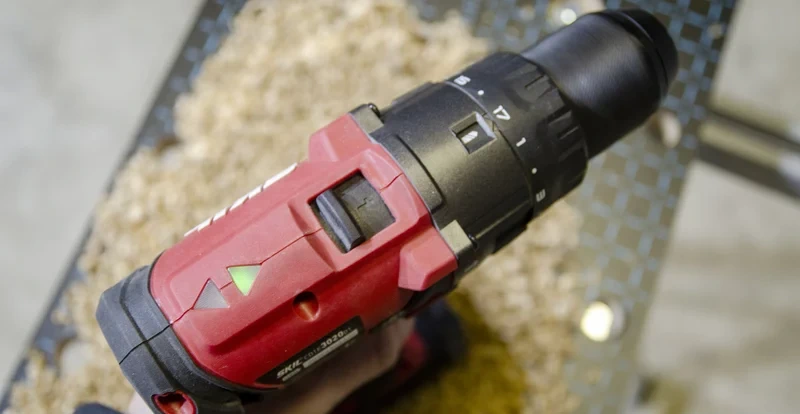
Ergonomics
As often, the Skil 3020 drill is made mostly of plastic. However, the specimen used here does not give the feeling of dealing with a neglected machine. The assembly is very good, and the drill seems robust. Rare parts of the crankcase are protected by rubber. However, this seems insufficient to counter the effects of a fall.
Like the 3070 HA, the 3020 HB falls into the category of rather compact hammer drills. The tool weighs 1.13 kg bare and 1.58 kg with a 2.5 Ah battery. Very limited values , given the characteristics of the drill. A good thing if you have to use this device for long sessions at arm’s length.
The handle of the Skil 3020 HB is identical to that of the 3070. It, therefore, offers a good grip overall, despite a somewhat light grip. The trigger variation lacks a little precision to be perfect, especially at low speed. A lead placed at the base of this handle makes it possible to keep the zone on which one always intervenes well-lit.
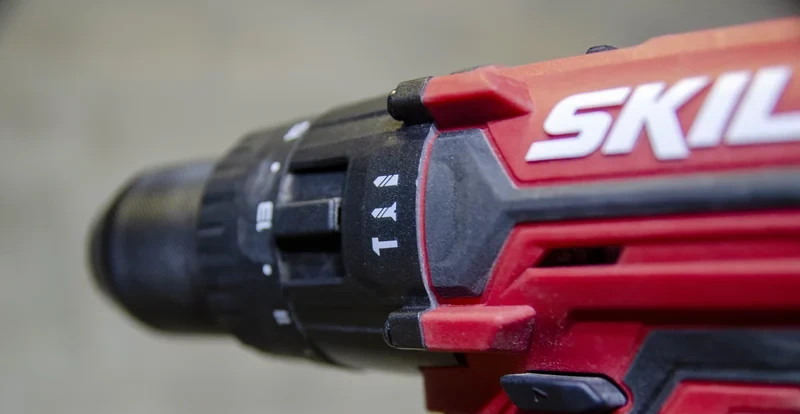
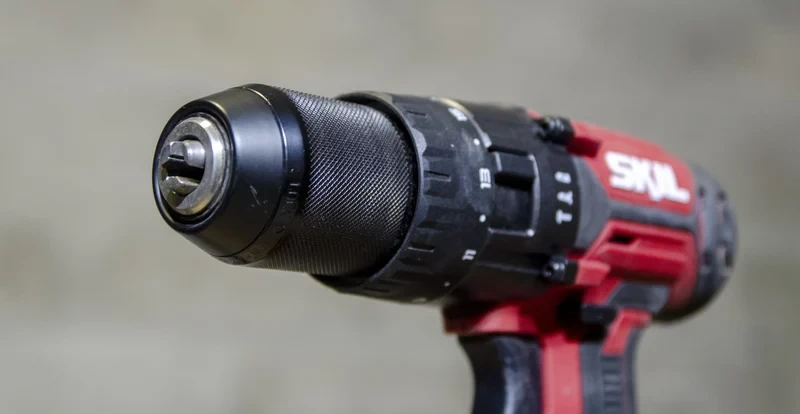
For certain tightenings, the Skil 3020 offers to adjust its torque on 17 levels using a ring positioned at the base of the chuck. This one handles without difficulty and maintains the chosen torque very well. To switch between the screwing, drilling, and percussion modes, you toggle a switch on both sides of the drill. The system is not perfectly fluid, and forcing it to switch from one mode to another is sometimes necessary.
The self-tightening chuck is entirely made of metal, a good point for its lifespan. It can carry drills with a shank no larger than 13 mm, which is standard. We have found a common fault with the 3070 since you must insist on tightening the chuck so the bit stays in place. It’s about getting the hang of it, but nothing too awkward.
On the top of the drill, Skil has positioned a small pictogram which allows you to know at a glance the mode used. Convenient to avoid bursting tiles in percussion mode if you are airheaded. Shifting between the two gears is seamless. Finally, Skil placed two luminous arrows on the top, indicating whether to screw or unscrew. The LED is activated only by pressing the trigger, this indication is not necessarily very useful.
Like most cordless drills, the Skil 3020 HB has a battery system that slides into the base of the handle. Their withdrawal sometimes lacks a bit of fluidity compared to other manufacturers, but nothing too bad. Skil “20V Max” batteries — 18 V batteries — have four LEDs indicating their charge level.
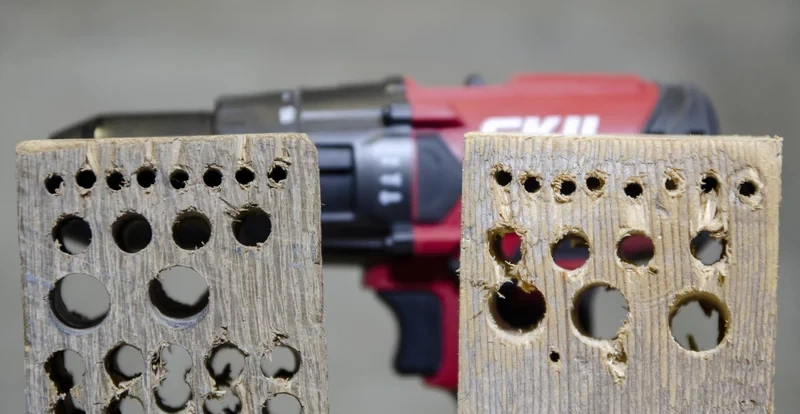
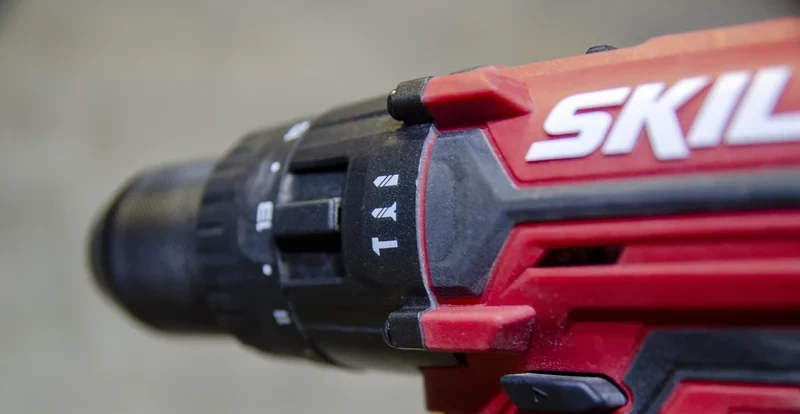
Screwing
Our screw test includes a 5 x 70 mm wood screw and an 8 x 100 mm lag screw. A pre-drilling of 5 mm is made for the second and none for the first. This test is applied in fir and oak cleats of 60 x 60 mm.
With 55 Nm of torque, we expected very good screw-driving performance with this Skil 3020. We came away from our test with a taste of unfinished business. Admittedly, the 17 positions (plus the two drilling modes) allow a good adjustment latitude. However, the Skil 3020 struggles to maintain a low speed. We measured at least 52 rpm in gear 1 and 196 rpm in gear 2. Rotations are too high to position a screw correctly, for example precisely. Its big sister, 3070 HA, is much more satisfying (24 and 72 rpm) than the Bosch Professional GSB 18V-55 (12 and 61 rpm).
During our tests, the Skil 3020 HB performed well with the 5 x 70 mm screw, whether working in fir or oak. On the other hand, it will be necessary to use the drilling mode, which uses the maximum torque of the machine, to screw the lag screw into the tree completely. We could not fully insert the largest screw in our protocol into the oak. Again, the Skil 3070 HA and Bosch Pro GSB 18V-55 are more efficient with their brushless motors. We noticed that the complicated screwdrivers had a clear tendency to heat the drill, a trait that is found much less with brushless models.
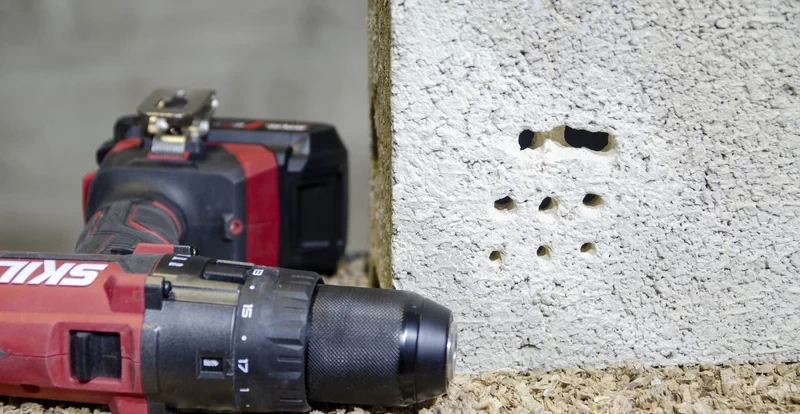
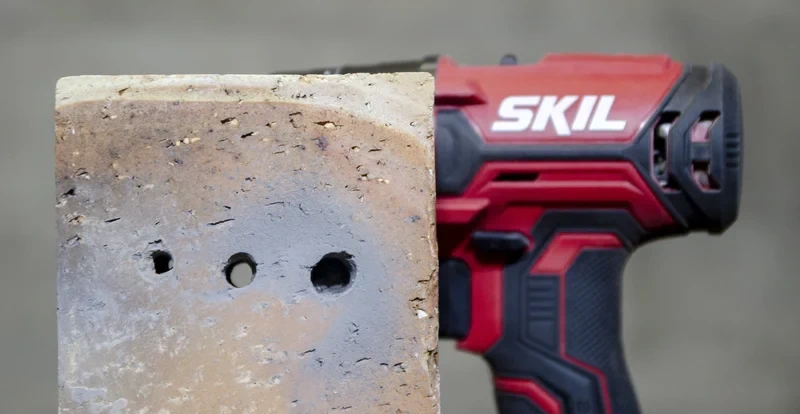
Drilling
We use wood drill bits of 5, 10, and 15 mm for our drilling tests, concrete drill bits of 6, 8, and 11 mm, and metal drill bits of 2, 6, and 10 mm. We drill into 60 x 60 mm fir and oak battens, cinder blocks, bricks, and 1.5 mm thick steel bars.
Skil’s promise of speed isn’t great. The 3020 HB indeed boasts of reaching 420 rpm in gear 1 and 1450 rpm in gear 2. According to our measurements, these values point to 388 and 1316 rpm, i.e. differences of 8 and 9%, respectively. These differences are, however, within the average of what we usually see.
Drilling in metal is a formality for the Skil 3020 up to the highest diameter, which requires a little more effort. The soft fir tree can be drilled without problem by Skil’s drill. Things get a bit more complicated for oak, and the engine is put under more strain from the 10 mm drill. The largest diameter holes in our protocol were made with difficulty. Avoiding them at the risk of heating the wood and the wick is better.
The Skil 3020 HB offers a percussion mode that delivers 21,700 strikes/min. A number lower than the 27,000 strikes/min that we have more frequently encountered on this type of drill. The ability of the American machine to pass through brick and cinder blocks suffers slightly, especially at the larger diameter. The Skil 3020 will still be able to troubleshoot effectively for small diameter and shallow holes in masonry. It is better to go through a real drill for more demanding work.
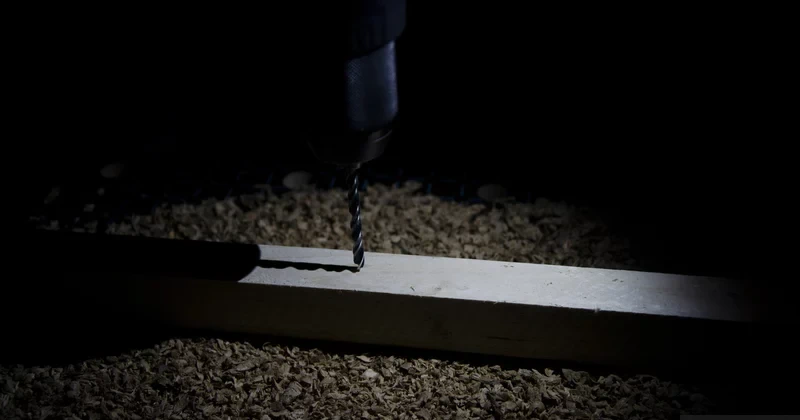
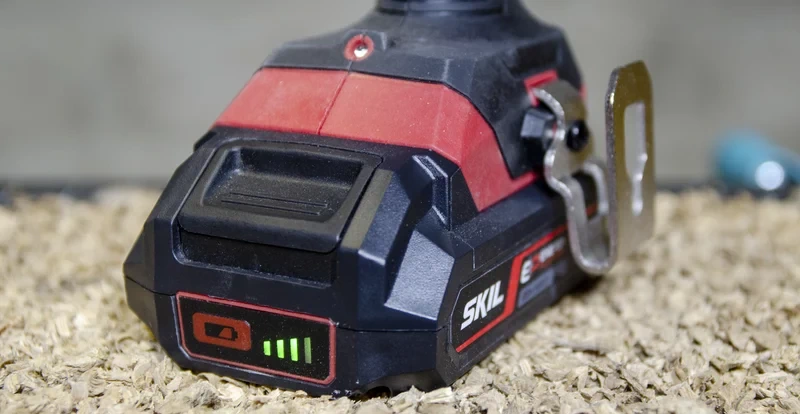
Noise
The Skil 3020 HB is one of the quietest screwdriver drills in our comparison. To date, only one model is more discreet: the Parkside PABS 20-LI D5, which is ultimately much less efficient.
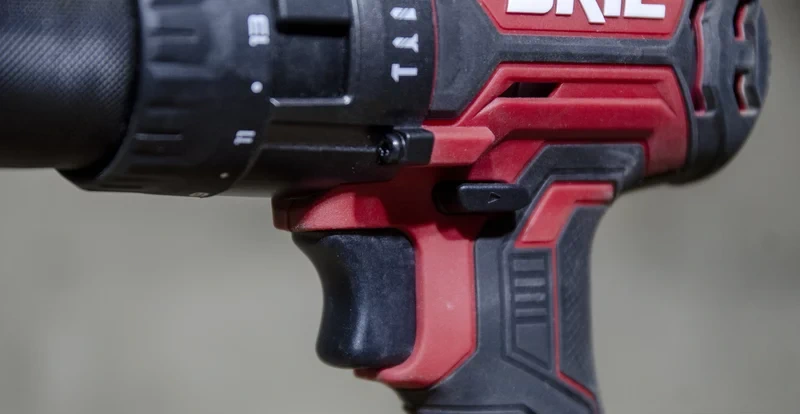
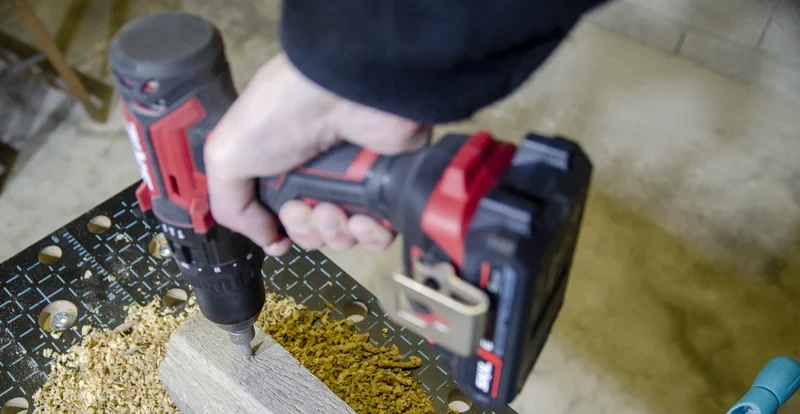
Autonomy and load
Our autonomy test protocol for screwdriver drills consists of drilling holes in 60 mm thick oak using a 10 mm diameter drill bit. In this game, the Skil 3020 HB and its 2.5 Ah battery are a bit disappointing. The drill completed 58 holes before stopping. This remains an honest score about our comparison, but average if we take into account the capacity of the battery. Indeed, the Bosch Professional GSB 18V-55 does barely less well (50 holes) with a 2 Ah battery. With the same 2.5 Ah battery, the Skil 3070 HA drilled 72 holes, helped, it seems, by its greater power and its brushless motor.
The charger supplied with the Skil 3020 takes 67 minutes to charge the 2.5 Ah battery fully. A time there again was a little below our expectations. For comparison, it only takes 36 min for the GSB 18V-55 charger to supply the 2 Ah of its battery.
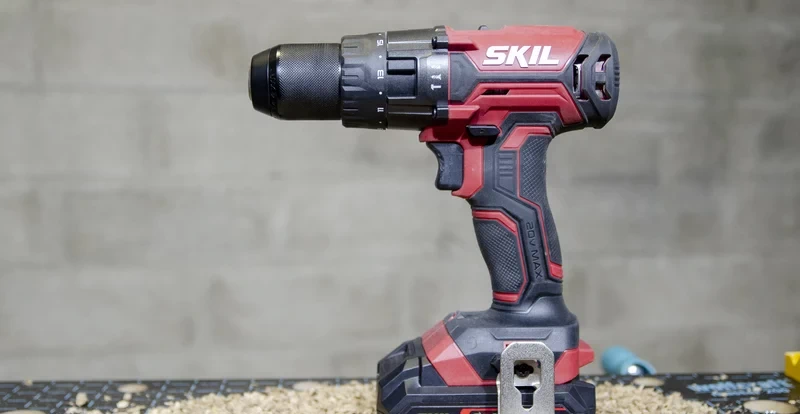
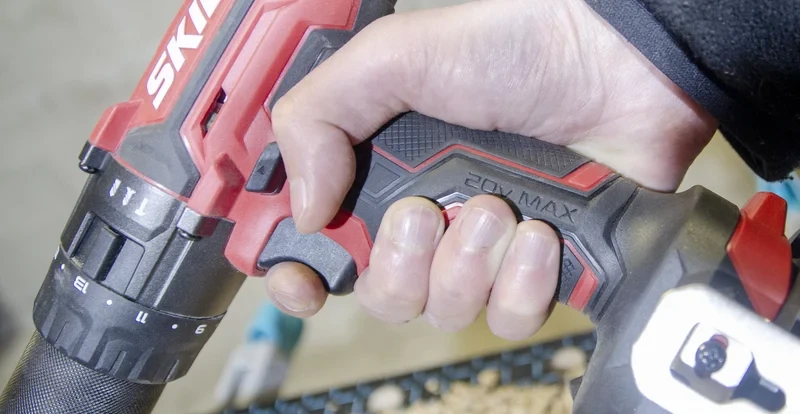
CONCLUSION
The Skil 3020 HB screwdriver drill provides a good performance overall. The difference in performance between the Skil 3020 HB and the Skil 3070 HA is felt. Certainly, the first is not ridiculous and offers good versatility for simple tasks. Still, the brushless motor of the second brings a lot for a price difference that is not insurmountable.
STRONG POINTS
- Compact and well-finished.
- Full metal chuck.
- Gifted for screwing and drilling small diameters.
- Efficient LED lighting.
- Getting started.
- Quieter than average.
WEAK POINTS
- Slow battery charging.
- Dimmer is less precise than on other models.
- Drilling and screwing are limited to large diameters.






